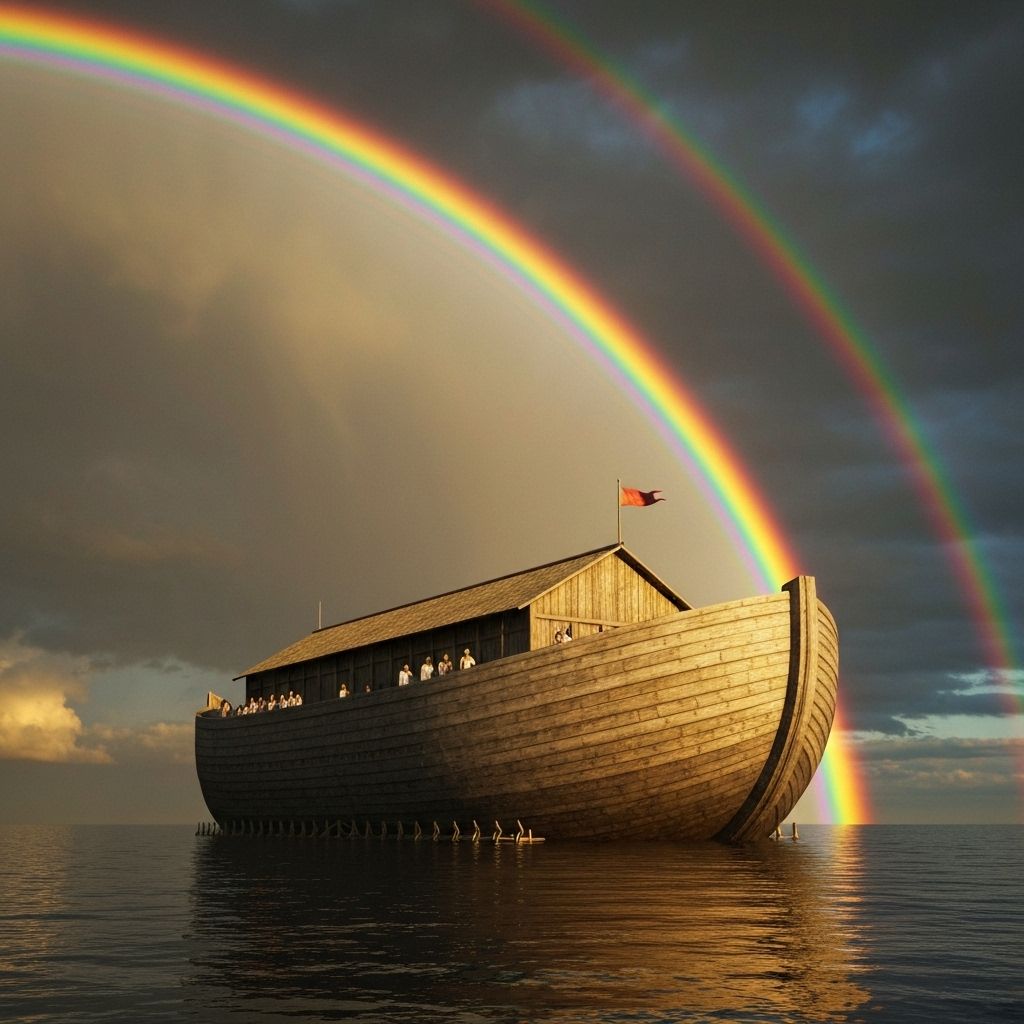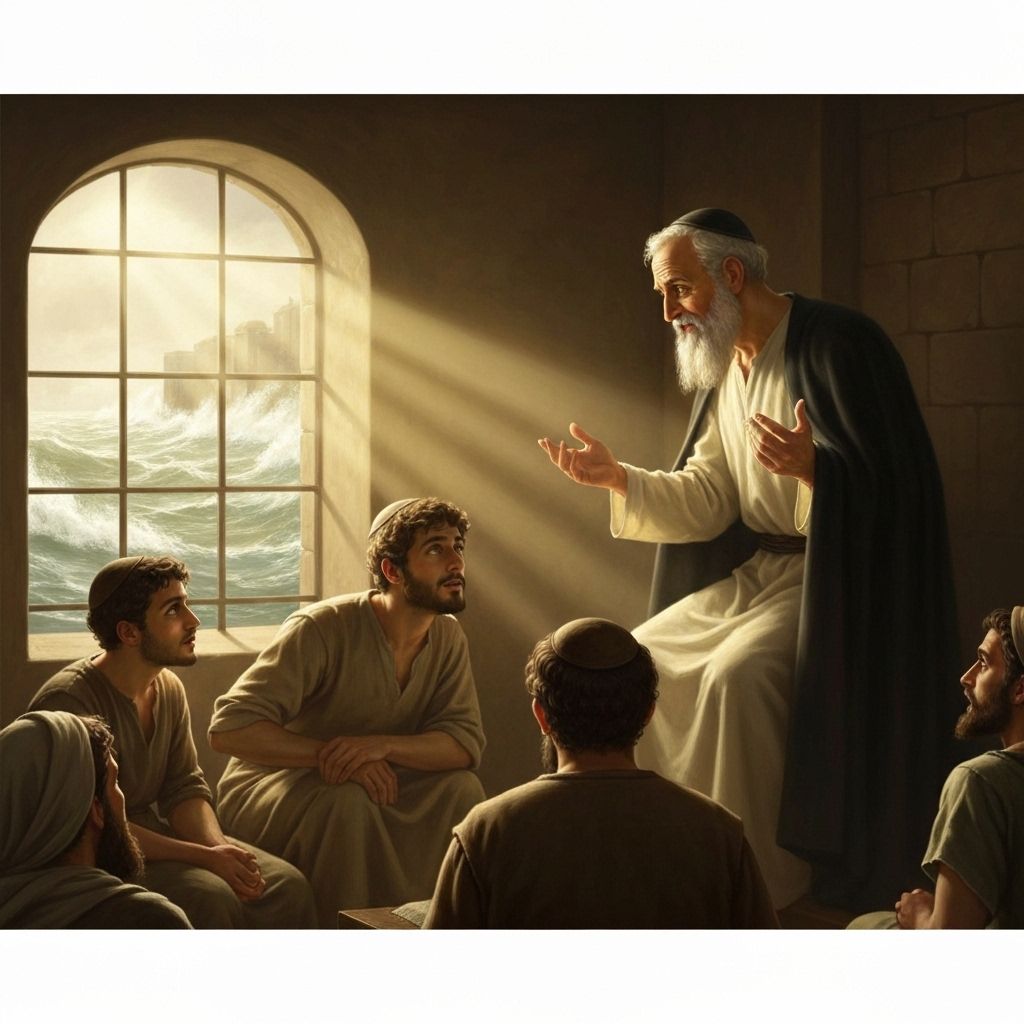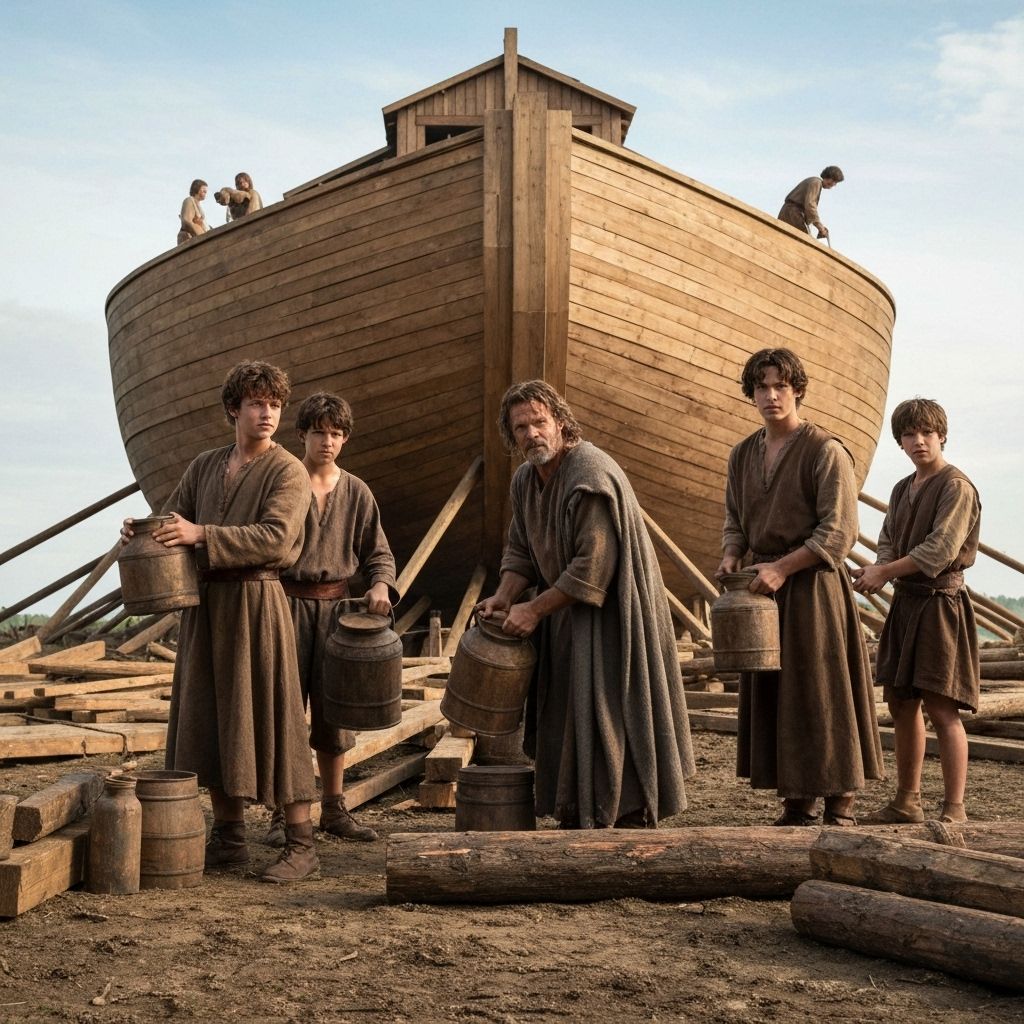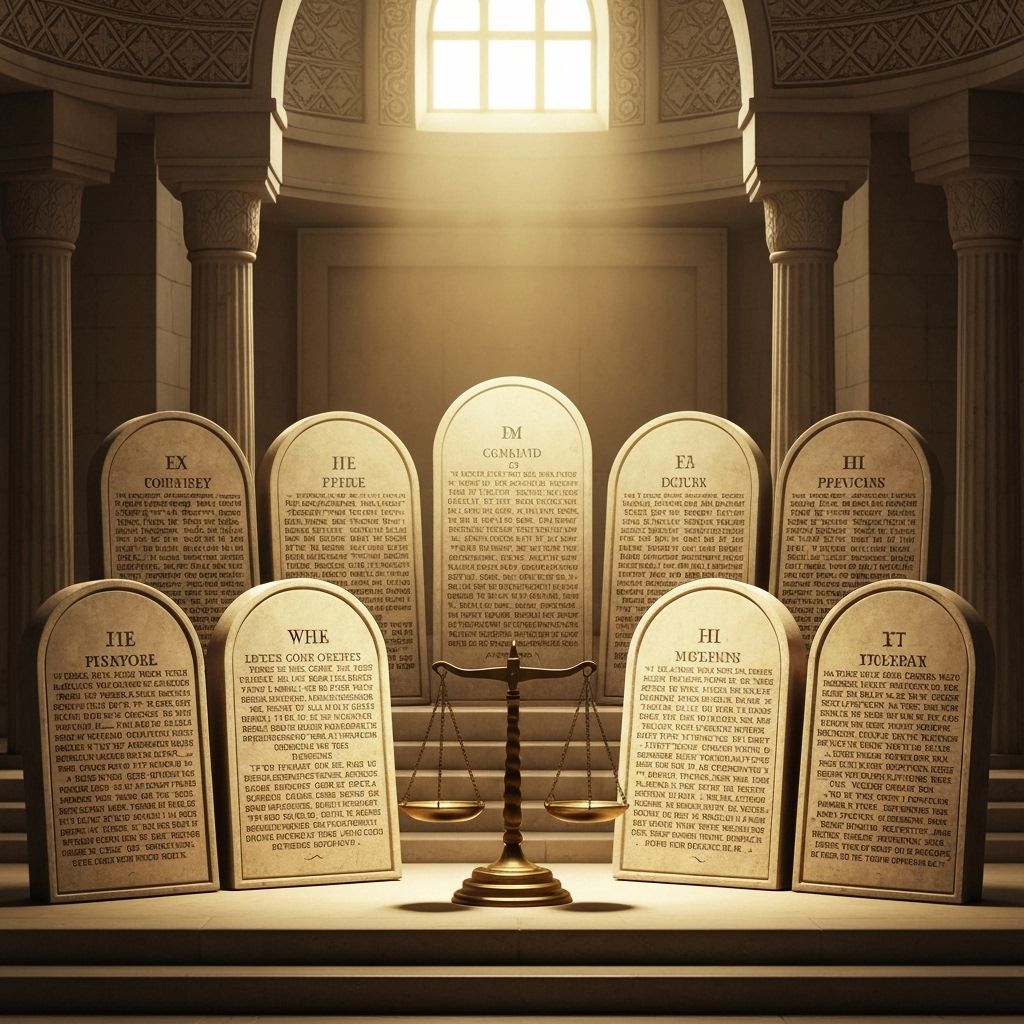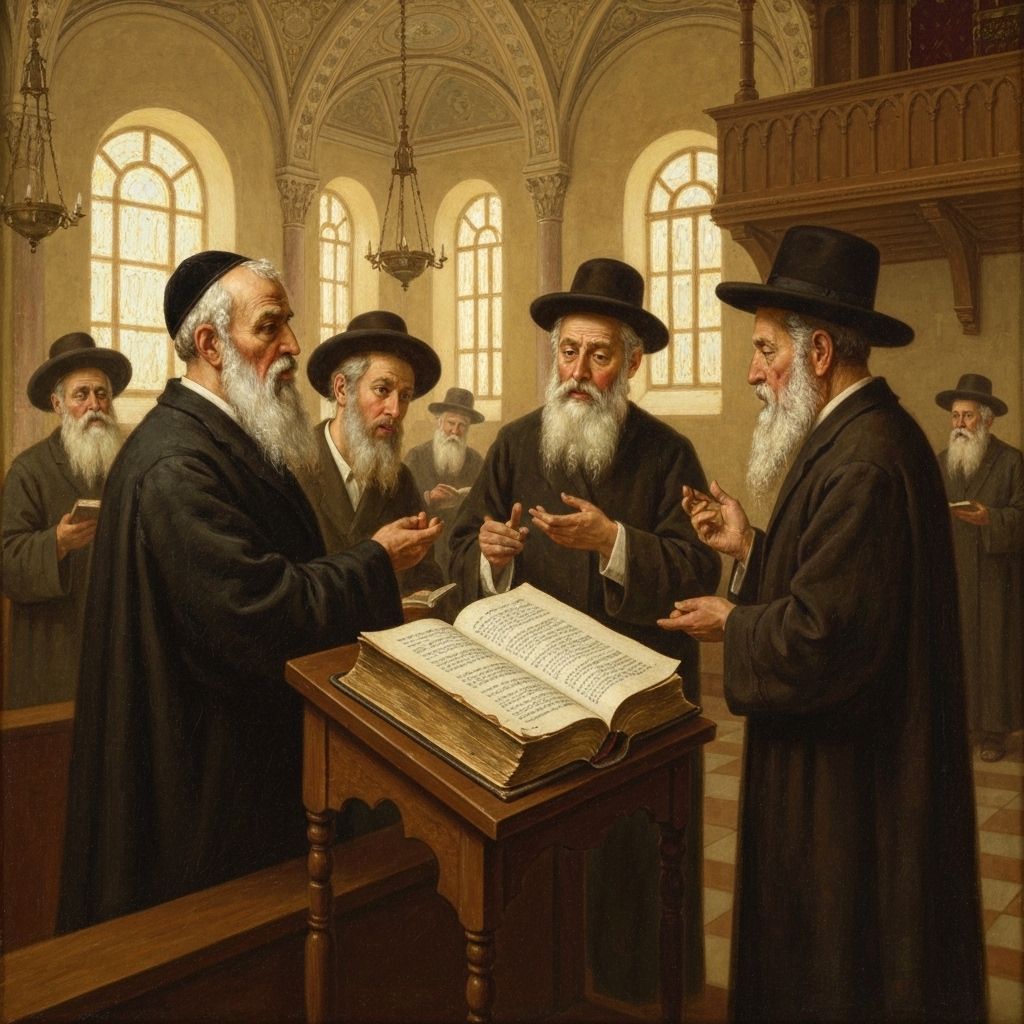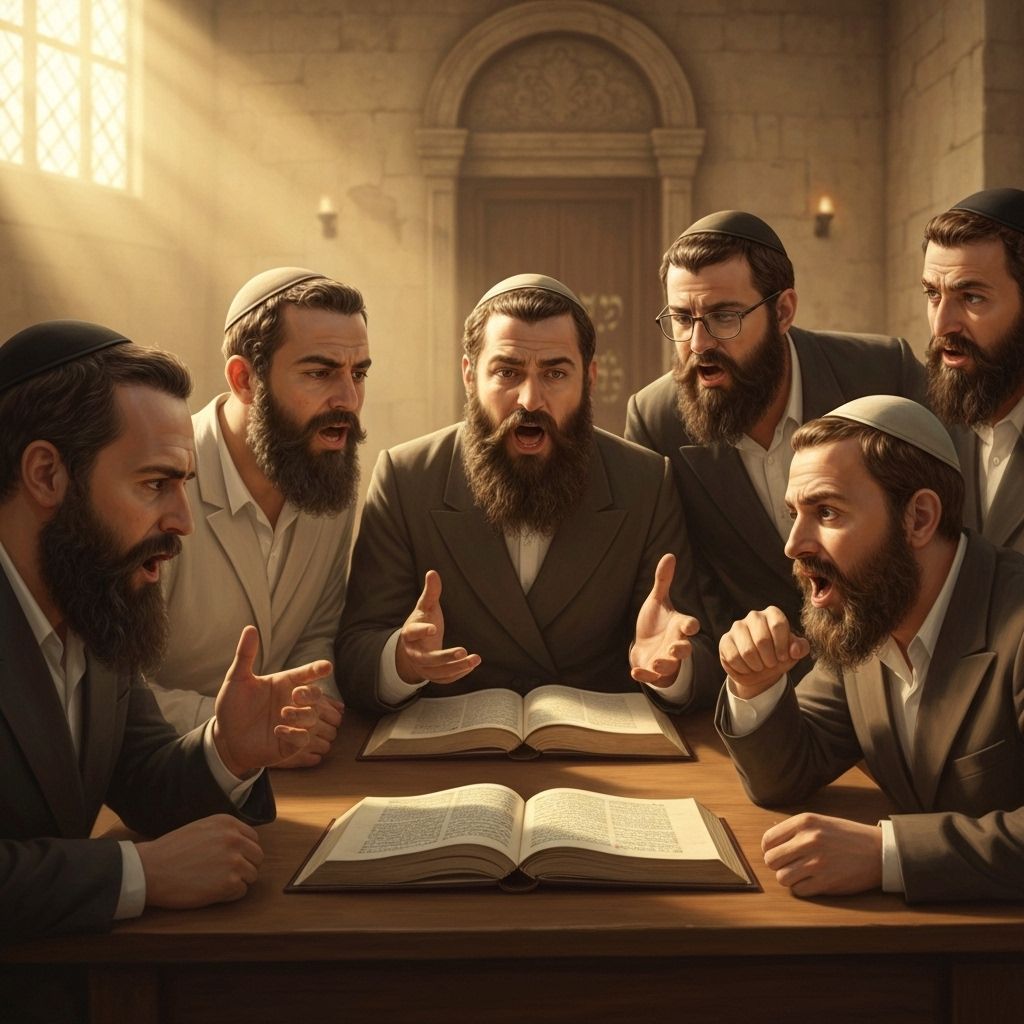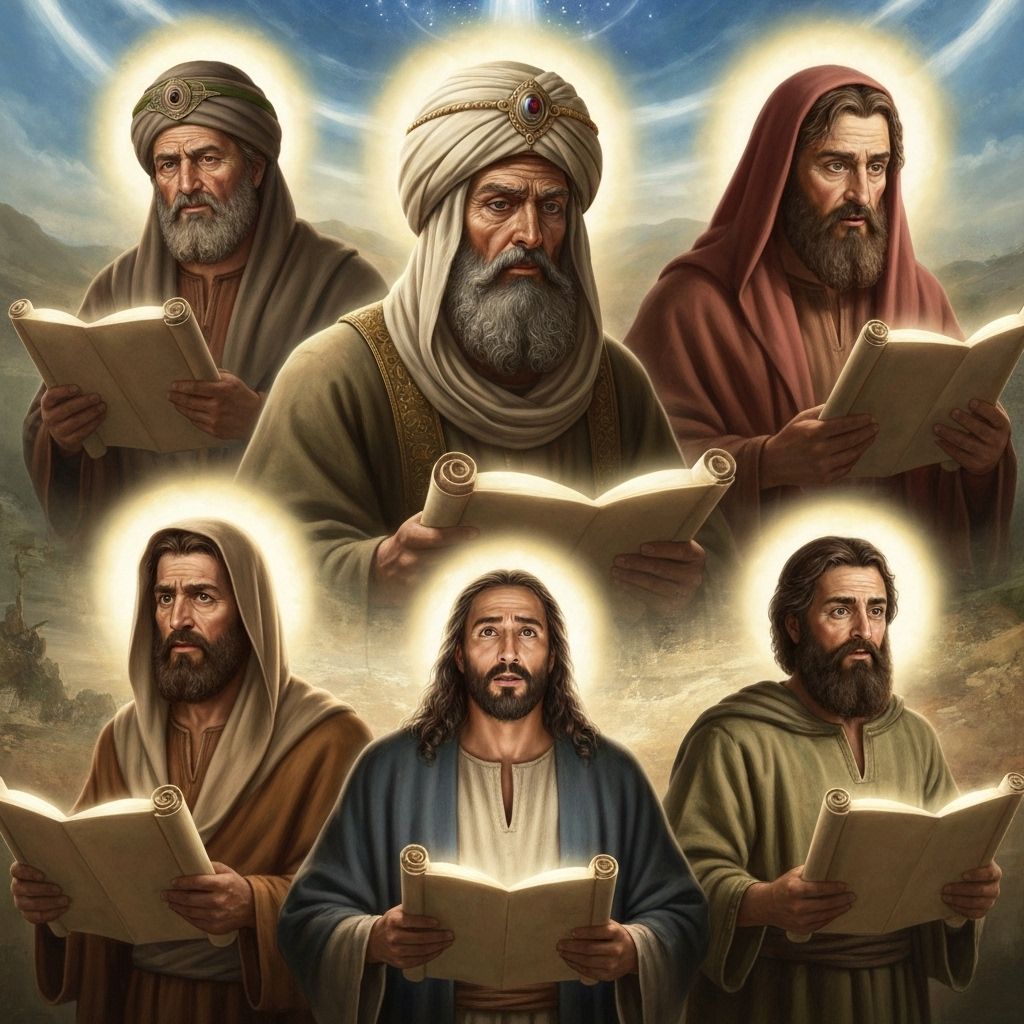3-Minute Summary
The Words of the Torah Explained with Help from Rashi and Ramban
Rashi (1040-1105) was a medieval French rabbi whose commentary on the Torah and Talmud is considered essential reading. His explanations focus on the plain meaning of the text and are known for their clarity and accessibility.
Ramban (1194-1270) was a Spanish rabbi, physician, and philosopher who provided deeper mystical and philosophical insights into the Torah, often building upon Rashi's work while adding his own profound interpretations.
Parashat Noach opens with a world in moral free fall. The Hebrew text describes the earth as filled with 'chamas'—not just violence, but a complete breakdown of justice, honesty, and basic human decency. Society has become so corrupt that people no longer recognize right from wrong, and the strong prey upon the weak without consequence. Into this darkness steps Noah, described as 'ish tzaddik tamim'—a righteous and wholehearted man.
The divine decision to bring a flood represents one of the most challenging concepts in all of Torah. How do we understand a Hashem of mercy choosing such devastating judgment? The rabbis teach that this wasn't arbitrary destruction but cosmic surgery—removing a cancer that threatened to destroy the very possibility of goodness in the world. The flood becomes a necessary reset, a return to the primordial waters of creation from which a new world can emerge.
Noah's righteousness is qualified with the phrase 'in his generation,' sparking centuries of rabbinic debate. Would Noah be considered righteous in Abraham's time, or was he only righteous by comparison to his corrupt contemporaries? This question forces us to examine whether righteousness is absolute or relative, and whether we should judge people by universal standards or by the context of their times and circumstances.
The construction of the ark becomes a 120-year project that serves multiple purposes. Practically, it provides time to gather animals and supplies. Spiritually, it offers the corrupt generation ample opportunity to observe Noah's strange behavior, ask questions, and potentially repent. The ark itself, with its precise dimensions and three levels, becomes a symbol of the ordered cosmos—a microcosm of creation preserved within the chaos of destruction.
The flood narrative unfolds with careful attention to timing and detail. Forty days and nights of rain, followed by months of waiting as the waters recede. Noah sends out birds to test the conditions—first a raven that flies back and forth, then a dove that returns with nothing, then again with an olive leaf, and finally doesn't return at all. Each stage teaches patience, hope, and the gradual process of renewal that follows devastation.
When Noah finally emerges from the ark, his first act is to build an altar and offer sacrifices. This isn't just gratitude but recognition that the new world needs a spiritual foundation. Hashem's response is the establishment of the Noahide covenant, marked by the rainbow—a sign that divine justice will henceforth work through natural law and human choice rather than cosmic catastrophe.
The rainbow covenant introduces seven universal laws for all humanity: prohibitions against idolatry, blasphemy, murder, theft, sexual immorality, and eating flesh from a living animal, plus the positive commandment to establish courts of justice. These become the foundation for ethical civilization, showing that while the flood was particular to one generation, its lessons are universal and eternal.
Noah's post-flood life reveals the complexity of human nature. He plants a vineyard, becomes drunk, and is found naked by his son Ham, leading to a family crisis that results in the cursing of Ham's son Canaan. This episode teaches that even the righteous are fallible, that survival doesn't automatically confer wisdom, and that the work of moral reconstruction is ongoing and difficult.
The Tower of Babel story represents humanity's next great failure—not through violence this time, but through hubris. United in language and purpose, they decide to build a tower reaching heaven, seeking to 'make a name for ourselves' and avoid being scattered across the earth. Their unity, which could have been a blessing, becomes dangerous when directed toward self-glorification rather than divine service.
Hashem's response to Babel is not destruction but confusion—mixing their languages and scattering them across the earth. This divine intervention prevents the concentration of power that could lead to tyranny while ensuring that human diversity becomes a permanent feature of civilization. What seems like punishment becomes protection, forcing humanity to develop different cultures, perspectives, and approaches to life.
The genealogies that conclude the parsha trace the development of nations and languages, showing how the scattered peoples of Babel become the diverse family of humanity. Each nation and culture carries part of the human story, and their differences become sources of strength rather than division when properly understood and respected.
Parashat Noach leaves us with profound questions about justice and mercy, individual responsibility and collective guilt, the nature of righteousness and the possibility of renewal. Noah's story reminds us that sometimes one person's faithfulness can preserve hope for an entire world, while Babel warns us that even our greatest achievements can become sources of spiritual danger if they're not grounded in humility and divine purpose.

